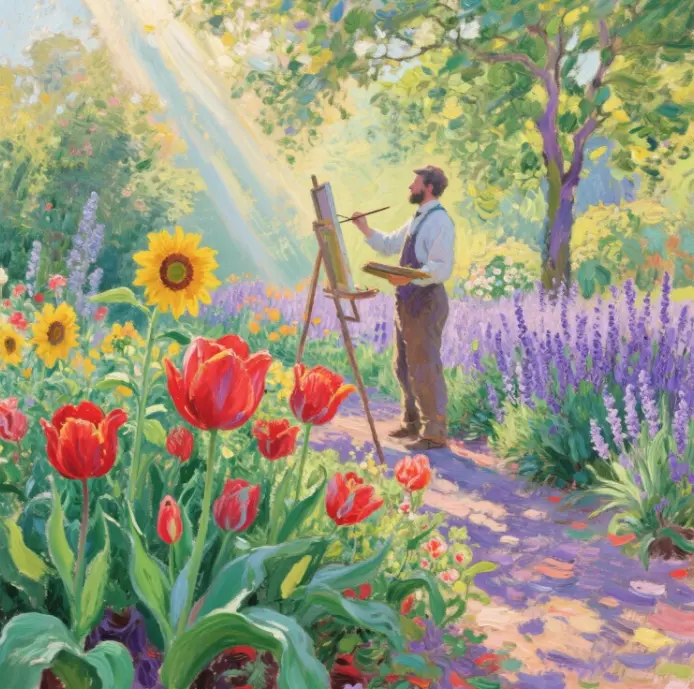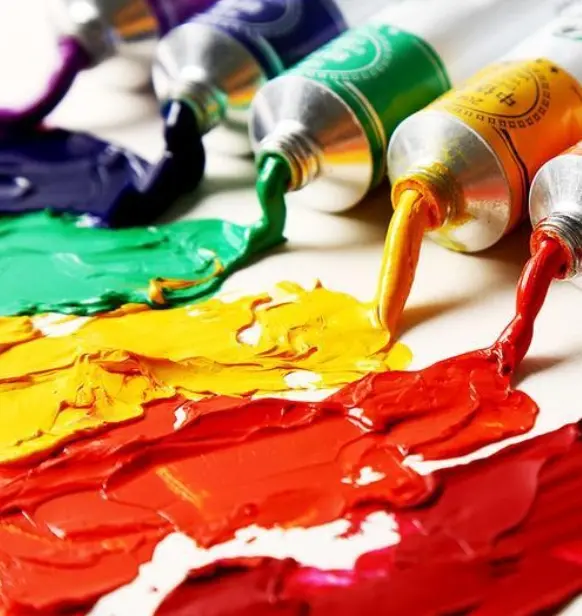artwork acrylic paintings is a form of art that uses acrylic paint to create. As a new type of painting pigment appeared in the 1960s, acrylic painting combines the advantages of watercolor and oil painting, and has the characteristics of fast drying speed, bright colors, strong water resistance, and easy to use, which is loved by artists and art lovers. This report will comprehensively analyze acrylic painting from the definition, historical origin, representative figures, technical characteristics, market value and other aspects, providing art lovers with a window to deeply understand the art of acrylic painting.

artwork acrylic paintings Basic Concepts and Characteristics
Definition of Acrylic Painting
Acrylic painting is a painting made with acrylic paint, which is a new type of painting pigment consisting of a chemically synthesized emulsion mixed with color particles. Its main ingredient is polyacrylic acid, which is water-soluble and forms a porous film that becomes water-resistant after drying.
Characteristics of Acrylic Painting
Acrylic painting has the following significant characteristics:
Fast drying: compared with other oil painting materials, acrylic paint dries faster, making the creative process more efficient.
Water solubility: It can be cleaned by using water without special solvents, which is convenient and easy to use,quick get acrylic paint off clothes.
Bright colors: acrylic colors are bright and varied, which makes the art work created more visual impact.
Durability: bright colors, colorful, stable chemical changes, can overlap, soft pigment layers bonded to each other to form a transparent or translucent pigment layer, strong adhesion, good weather resistance, and durability.
Wide applicability: it is suitable for easel painting, indoor and outdoor mural painting, etc. It can be piled up repeatedly to produce a heavy effect.
Various techniques: Since acrylic paint is a kind of pigment between gouache and oil painting, the use of it is almost the same as the advertisement color, and it is also mixed with water, so the techniques of acrylic painting generally include thin painting method, thick painting method, apparent painting method, splashing method and so on.

The Birth of Acrylic Pigment
Acrylic pigment is a technological product of the modern chemical industry in the 20th century, and its history can be traced back to:
- In 1901, the German scientist Otto Rohm (O. Rohm) published his doctoral dissertation on the topic of “On soft acrylate polymers”.
- In 1914, Rohm conducted research on acrylate polymers as a rubber substitute and as a raw material for the production of paints instead of dry vegetable oil.
- In 1934, Röhm created the first usable acrylic resin dispersion.
- In the 1940s, Leonard Bocour and Sam Golden created acrylic paints based on mineral essential oils rather than water-based.
- In the 1950s, German chemist Otto Röhm and his business partner Otto Haas introduced the first acrylic emulsions designed for paints.
- In 1955, the first water-based acrylic paints were released.

Artistic Applications of Acrylic Painting
The application of acrylic painting in the field of art began in the 1950s:
- Beginning in the 1950s, acrylic painting rapidly became popular in North America and gradually became one of the three major types of paintings alongside oil painting and watercolor.
- Around 1968, Japan’s Holbein, Turner, Matsuda Pigment Company successively developed acrylic pigments, and put them into production and marketed.
- The development of acrylic resin in China began in the 60s, and the domestic acrylic pigment was born in the early 80s.
Development of Acrylic Painting Technique
The early development of acrylic painting technique was closely related to the abstract expressionist artists:
- J. Pollock (1912-1956), R. MotherWell (1915-1991), W. deKooning (1904-), H. Hofmann (1880-1966), W. deKooning (1904-), W. deKooning (1904-), W. deKooning (1904-), W. deKooning (1904-), H. deKooning (1904-), H. Hofmann (1880- 1966), H. Hofmann (1880- 1966), H. Hofmann (1880- 1968), and H. Hofmann (1890- 1968), as well as the artists in the field of acrylic painting. -1966), H. Hofmann (1880-1966), Mark Tobey (1890-1976), and other artists utilized a variety of means to create acrylic painting techniques such as dripping, flinging, dragging, squeezing, pressing, and splattering.
- After the Mexican Revolution, Orozco (J.C. Orozco, 1883-1949), Rivera (D. Rivera, 1882-1957), Siqueiros (D.A. Siqueiros, 1896-1974) and other painters set off the Mexican mural movement, they used acrylic paint to create large-scale mural paintings, the expression of Mexico’s history and society, ethnicity and natural scenery [. They used acrylic paint to create large-scale murals that represented Mexico’s history and social, ethnic, and natural landscapes.

Acrylic Painting Techniques and Creation
Basic Acrylic Painting Techniques
Acrylic painting techniques are varied and common techniques include:
Thin painting method: painting with diluted acrylic paint, similar to the effect of watercolor.
Thick Paint: Painting with thicker acrylics to create a rich texture.
Revealing Method: Painting on top of a dry layer of paint, using the underlying color to come through and create special effects.
Splatter Method: Create random textures and effects by splattering paint.
Steps to create an acrylic painting
Preparation tools: acrylic paints, brushes, canvas and other basic materials .
Choose the theme: it can be your favorite landscape, figure or abstract work.
Freedom of expression: whether realistic or abstract, the key is to let go of constraints and follow your inner feelings!
Essentials of Acrylic Painting Techniques
Color Mixing Techniques:
- Master the principles of color: Understand the matching and use of colors, such as red-green, blue-orange, and other contrasting colors
- Learn to use a color wheel and master the basic techniques of color mixing
- Obtain the desired color by mixing different colors of paint
- Learn to use different ratios of paint and water, and master the thinning of paints to get a better color mixing effect
Depiction of lines and contours:
- Keep the lines smooth and natural, avoid intermittent or too hard
- When depicting lines and contours, pay attention to the details of the treatment, such as shadows, highlights, etc., in order to enhance the picture’s sense of hierarchy and three-dimensionality
- Through the thickness of the line, the change of the real and the imaginary to express the object’s silhouette and texture
The use and matching of color:
- Master the basics of color: understand the basic concepts of the color wheel, color contrast, color matching, etc.
- Learn the use and matching of color by observing nature and good works of art.
Tips for using acrylic paints:
- Acrylic paints need to be mixed with water and dry quickly, so you need to add water appropriately in the process of using them.
- Wait for the previous paint to dry before continuing to apply the next layer.
- Before applying the color, make sure that the picture is flat and smooth, so as to avoid the picture from curling up and deforming after the paint dries.
- Acrylic paints should not be stored in the palette box for a long time, and you need to clean them in a timely manner after finishing the painting.

Special techniques for acrylic painting
Mixing with watercolor:
- Before mixing colors, dip the brush bristles into wet so that the acrylic color will not stick to the brush bristles
- Do not dry the brush bristles or dip the brush into the paint with a dry brush
- Acrylic paints vary in transparency, some are transparent and do not have strong coverage; some are opaque, powdery, and have strong coverage; and some are in the middle
- Acrylic painting techniques and steps, can be thick or thin, dry or wet
Mix with multiple mediums:
- Can add sand, wood chips, etc. to add texture to the picture Also can be combined with other materials such as watercolor. Acrylic paint can be mixed with a variety of media: you can add sand, wood chips, etc. to acrylic paint to increase the texture of the picture
- It can also be combined with other materials such as watercolors, oil sticks, etc. to create
As a modern form of painting, acrylic painting has become an indispensable part of contemporary art by virtue of its unique material characteristics and rich expressive power. From historical development to technical characteristics, from representative figures to market value, acrylic painting shows unique charm and broad development prospects.
For art lovers, acrylic painting is an ideal choice: it has both the heavy texture of oil painting and the transparency and smoothness of watercolor painting, fast drying, easy to use, relatively affordable, and suitable for artists of all levels to create. Through systematic learning and continuous practice, everyone can master the skills of acrylic painting and create their own works of art.




